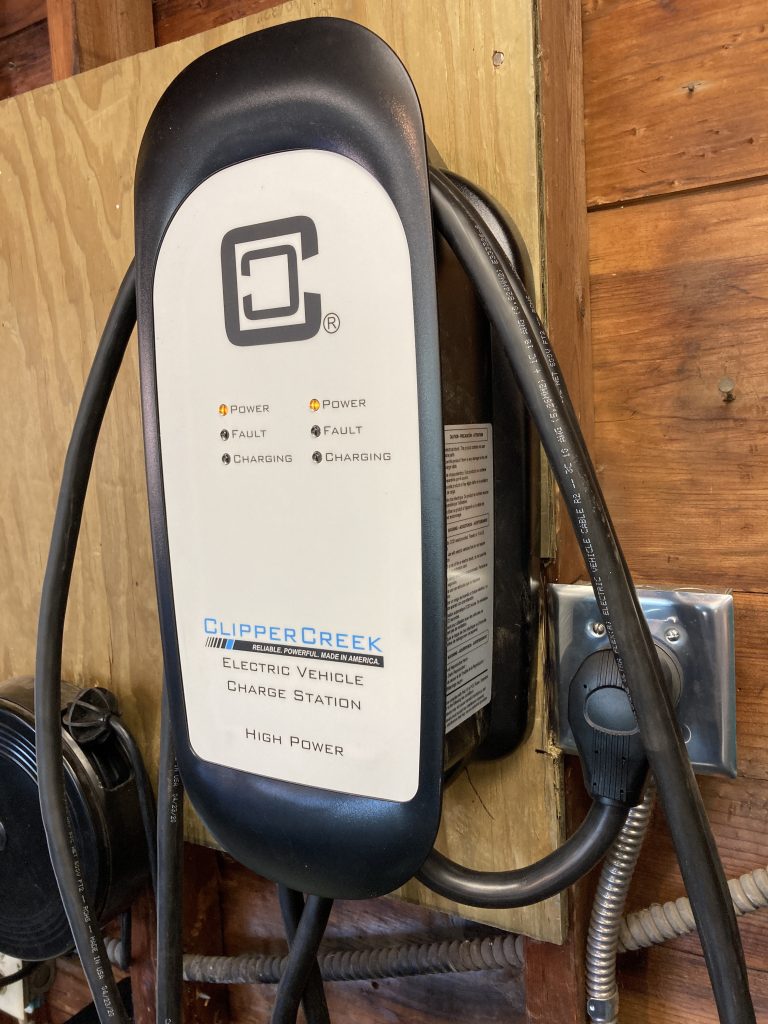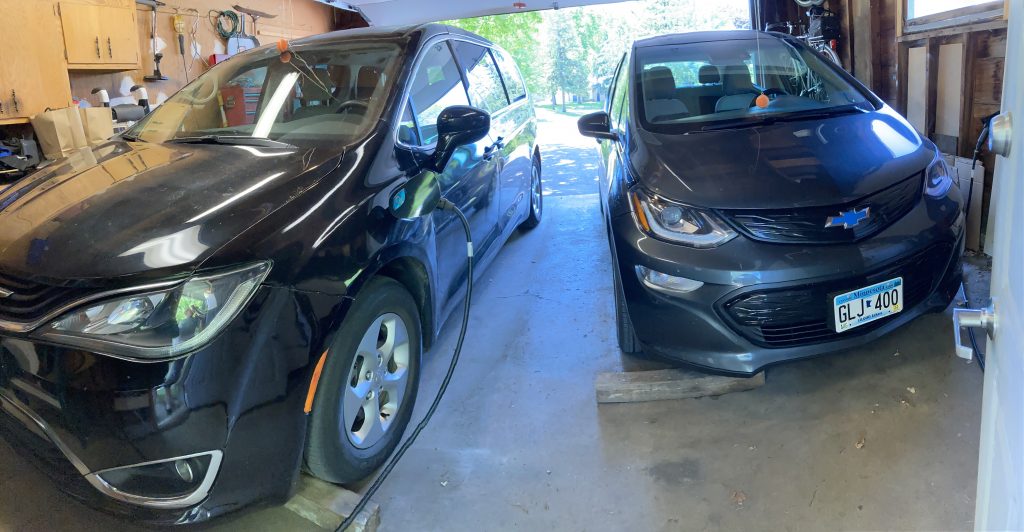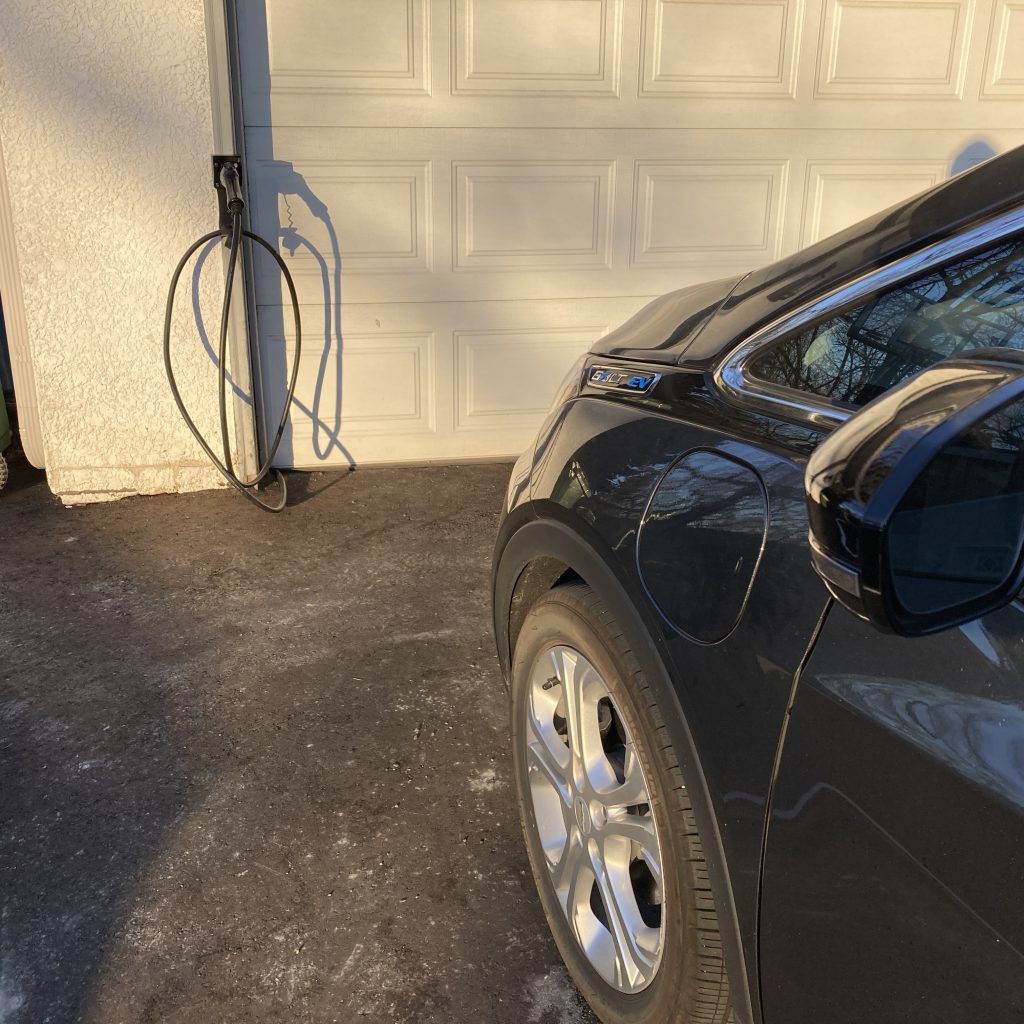I knew having two electric-powered vehicles in the garage would initially present some charging problems. We have a garage fridge and an air compressor that already like to trip the circuit breaker when both are running full-tilt. Charging two vehicles from that same 120V circuit was going to be tricky.
Offset Charging Schedules
Until we could add a dedicated 240V circuit, the first thing I did was set charging schedules for both vehicles. I set the Bolt to charge from Midnight to 4PM. Because I work from home, I tend to drive my car (usually to rehearsal) after work.
Setting the Bolt’s charging schedule is a bit complex. It’s labeled rate scheduling because you can configure it to match your power company’s off-peak, mid-peak, and peak rates for weekdays and weekends, summer and winter. Lots of options!
I set the car to charge on off-peak only when at home and then made the off-peak hours Midnight to 4PM every day, year-round. Done and done.
The Pacifica is easier to set a schedule. It simply has start and stop times for weekdays and weekends. I set it to charge from 4PM to Midnight every day.
Because both vehicles clocks are synced to the cell phone network or GPS, I made them turn on/off at the exact same time. This seemed to work for a while until I tripped the breaker at 4PM one day. Just one second of overlap with one car coming off the charge and the other firing up was enough to trip the 20 amp circuit.
Both vehicles use 15-minute increments in their scheduling software. So I set the Bolt to charge from 12:15AM to 3:45PM to give a buffer. Still, on days when both cars were driven, neither were getting a full charge, so it was time for an upgrade.
240V Outlet & Level 1.5 Charging
To facilitate a Level 2 charger, we had an electrician install a 14-50 50-amp RV-style 240V outlet in the garage. If you have a 240V outlet and don’t yet have a Level 2 charger – don’t worry, you can double your charge rate with the included “portable” charger.
Dual Level 2 Charging
After the electrician installed a 50-amp 240V outlet, it was time to go big or go home at home. I ordered a Clipper Creek 40-amp dual car charger. While it’s true that most charging stations are just “fancy extension cords” – this one has some smarts in it. If two cars are charging at the same time it will split the charge and feed 20-amps to each vehicle. If only one vehicle is charging, it will get the full 40-amps.

At that rate, the van can charge fully in 2 hours and the Chevy could always get to a full charge overnight. Because having a Level 2 charger means we can really blast some power into charging, I set both vehicles charging schedules to 9PM-9AM which is off-peak for my power company.

Charging Extension
While I’m waiting to get my Bolt’s battery replaced because of the recall, I need to keep it outside. To be able to charge in the driveway I purchased a 40-amp J-1772 extension cable. It adds 20 feet to to my garage charger so I can reach it in the driveway. So the charge handle doesn’t just get left on the ground (or in the snow), I mounted a EV holster to the side of the garage.

When I first got the message about the battery recall affecting every model year Bolt, I started parking the car in the driveway (per Chevy’s recommendation). Before I got the extension cord I switched from using the high-amp Clipper Creek charger to the included “portable” charger, but plugged into 240 volts. This worked great for a while because I could use a normal extension cord with the included charger. To work on 240 volts, the extension cord just has to have low-gauge wires (thick) with no extras like LED indicator lights.
It started to become a nuisance as charging both cars meant I’d have to go out and switch the one active charge plug to the other car once the first was done. I could have purchased a 50-amp RV splitter for $100 and used both portable chargers at the same time. The 50 amp outlet would have more than enough overhead as each portable charger maxes out at 12 amps for 24 amps total. This would actually be a great (cheap!) setup for two cars and 240 volts without having to invest in a big charger.
But I already had the big charger and $100 was more than half of the J-1772 extension, so I went that route and it’s been working great.
Leave a Reply